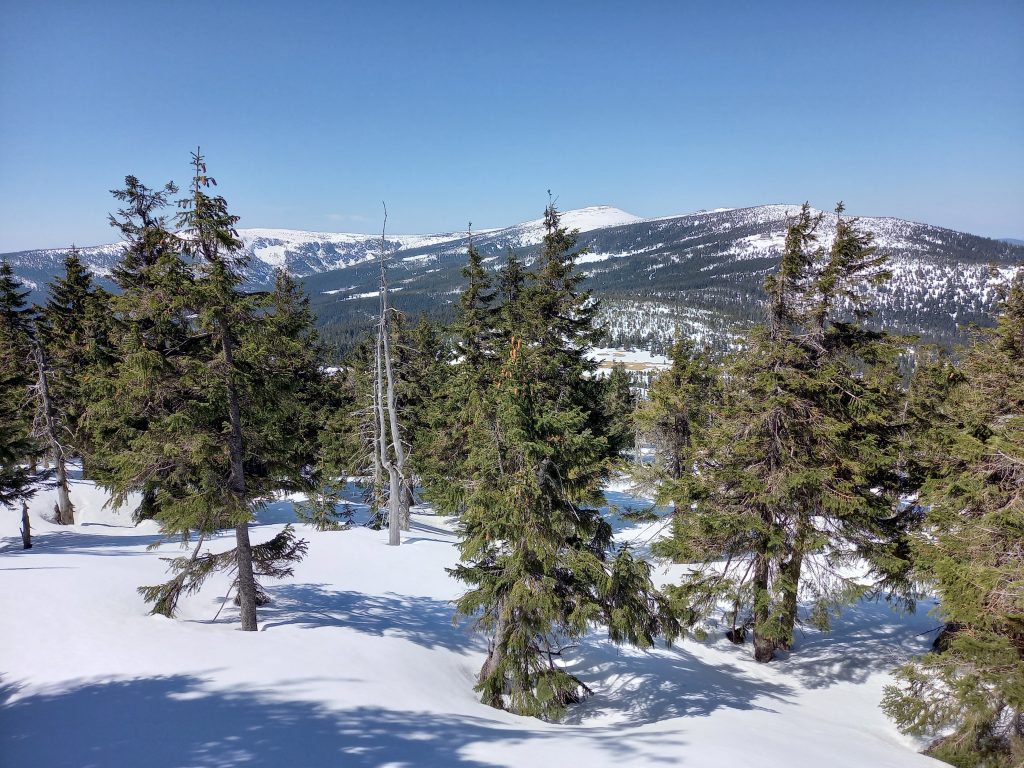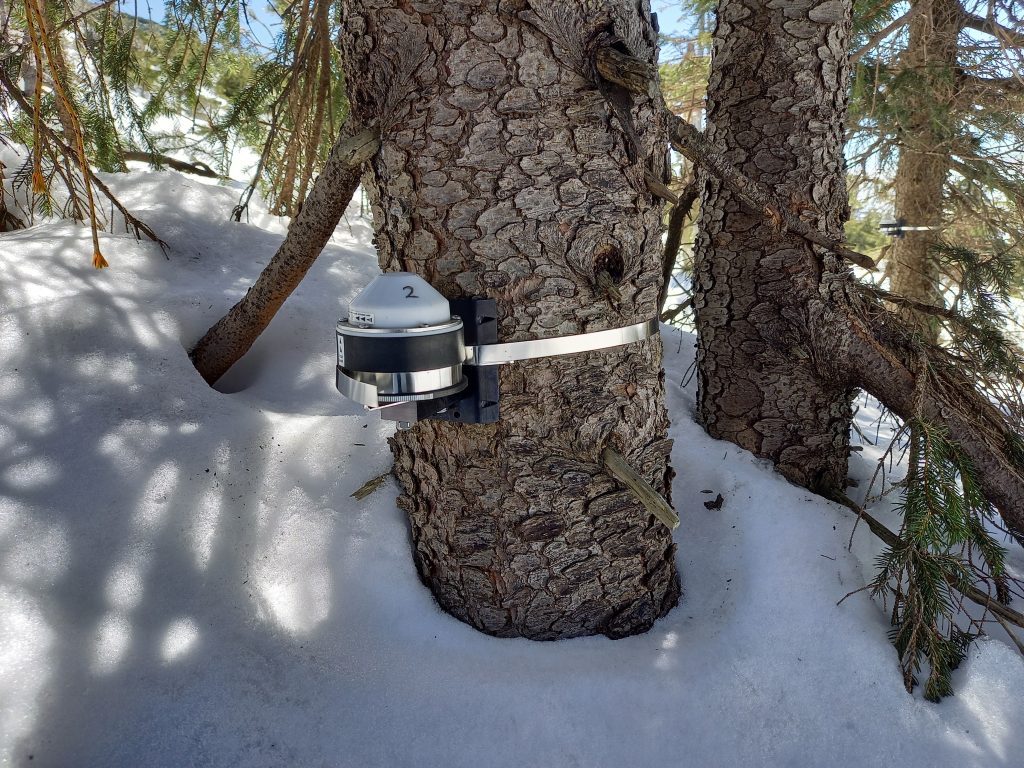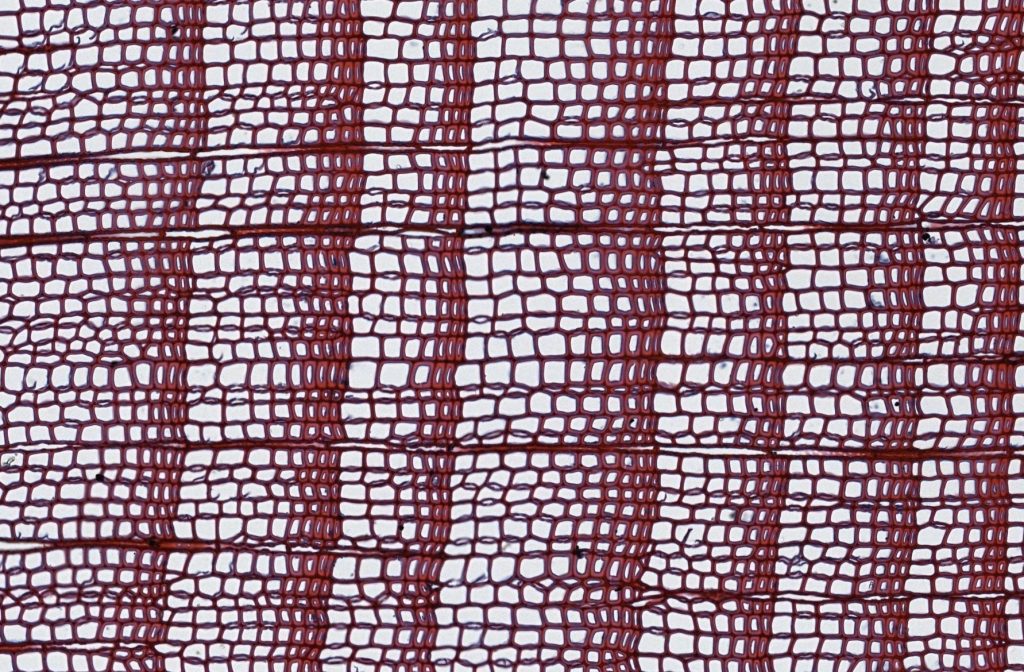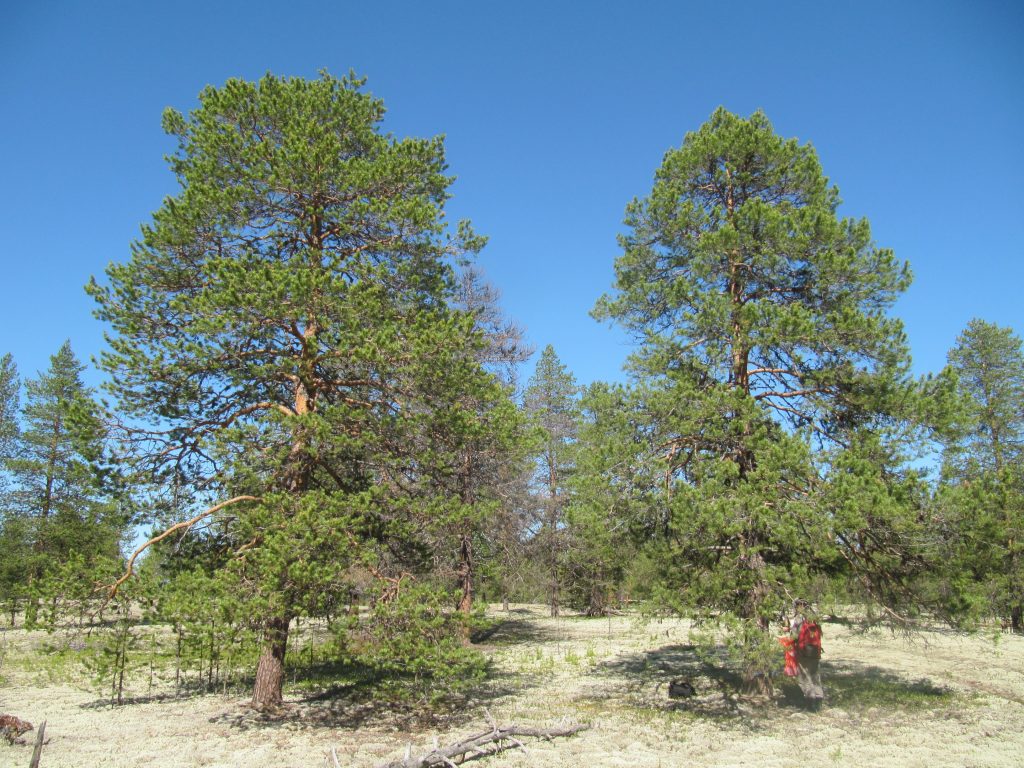
Treeline ecology
Subarctic and alpine treeline ecotones are among the ecosystems most sensitive to environmental change. Due to the tight coupling of forests to global carbon and energy cycles, treeline shifts and changes in forest productivity are highly debated topics in ecology, biogeography, and earth sciences in general.
Studying tree growth in treeline ecotones is one of our main research interests. We study the effects of climate change, topography, and air pollution on tree growth and forest ecology at different temporal scales (decadal to daily resolution). We use different tree-ring proxies (tree-ring width, wood density/blue intensity, wood anatomy, isotopes), monitoring efforts (dendrometer records, xylogenesis monitoring, monitoring of seedling establishment), and link this dendrochronological information to data from forest inventories and satellite imagery or to tree growth models.
Most of our work is based at alpine and latitudinal treelines in Europe (mountain ranges in the Czech Republic, the Alps, Scandinavia, and the Pyrenees). Other study areas include the Himalayas, the Rocky Mountains, Western Russia, Alaska, and Canada.
Tree growth monitoring
Monitoring tree growth helps us better understand how trees respond to daily changes in weather, as well as how entire stands of trees respond to changes in weather and climate over longer time scales. We operate three types of monitoring plots:
1) Three monitoring plots are located in the treeline ecotone and subalpine forest of the Krkonoše Mts. (N Czech Republic). Tree growth is intensively monitored by taking weekly microcores to analyze wood formation (xylogenesis), and by measuring changes in stem girth with band dendrometers. Air and soil temperature and soil moisture are monitored.
2) We operate multiple monitoring plots with automatic dendrometers and loggers of microclimatic conditions distributed across the Czech Republic. We installed devices in diverse and multispecific stands to capture the intra-annual growth response of the main temperate tree species (pine, spruce, larch, oak, beech, oak). In addition, we maintain a dense network of band dendrometers along an elevational gradient in the Jeseníky Mts. (NE Czech Republic) with a focus on beech and spruce. Outside of the Czech Republic, we operate sites of dendrometer monitoring in Norway, Sweden and Spain.
3) 21 permanent plots for monitoring changes in forest structure and seedling establishment and survival are located in the treeline ecotones of Krkonoše and Jeseníky Mts. Seedling microplots are inspected twice a year and tagged trees are re-measured every four to five years.


Wood anatomy
Analyzing wood cells (mainly cell lumen area and cell wall thickness) from microscopic thin sections of wood can help us better understand how trees respond to environmental conditions at intra-annual resolution (days to weeks). We link measurements of these xylem anatomical traits to climate to decipher, for example, late spring frost events or short periods of spring or summer drought. This way, we can detect temporal and spatial trends in tree climate-growth responses that are difficult or impossible to detect when analyzing annually resolved tree-ring widths.
In monitoring xylogenesis (wood formation), we analyze the presence of wood cells in weekly collected microcores to examine temporal changes and spatial differences in phenological dates (onset and ending of growth in spring/autumn) and changes in growth rates.
Tree growth modelling
Tree growth is complex and simultaneously influenced by a variety of factors. Since climate is often the main growth-limiting factor, we use climate-driven process-based models of tree growth to better understand how temperature and water availability interact in limiting tree growth over the course of a growing season. The models also help us estimate temperature- and water-driven intra-annual growth rates and phenological dates at sites where empirical data are scarce.
We have successfully applied process-based models to different sites (Mediterranean, temperate forests, treeline sites in Europe and beyond) and using different tree and shrub species.
